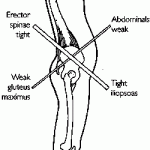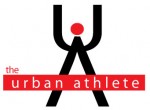Categories: Muscle Function
Audience: Therapists and strength coaches
Purpose: Questioning a common belief with the use of simple joint mechanics and anatomy.
Caveat of Ignorance: This post is probably one that is more about splitting hairs and quibbling about small details than saying anything ground breaking. This post is unlikely to change your training routines, assessments or rehab protocols. Ideally, it sheds some information on how we explain what we do. (more…)
 Update: I am not the first to write about this area. I found a great post by Todd Hargrove tackling the same topic and saying much the same (he does it more succintly and I address a few other areas as well). His post is here: http://www.bettermovement.org/2011/does-excessive-sitting-shorten-the-hip-flexors/
Update: I am not the first to write about this area. I found a great post by Todd Hargrove tackling the same topic and saying much the same (he does it more succintly and I address a few other areas as well). His post is here: http://www.bettermovement.org/2011/does-excessive-sitting-shorten-the-hip-flexors/
The Tight Hip Flexor Bogeyman
We too often tell patients that their pain, dysfunction or poor performance on any movement is due to the great bogeyman of hip function - TIGHT HIP FLEXORS. It is quite a go-to explanation for all things bad. Where this idea started I don’t know but it is certainly propagated by the Lower Crossed Syndrome Theory. This theory contends that dysfunction occurs when your pelvis is tilted forward as a result of tight hip flexors, weak glutes, tight low back muscles and weak abs. At its heart, this theory assumes the body works like a puppet where we can tension and loosen our strings (aka muscles) and watch our pelvis dance into some assumed nasty or happy position. (more…)
Rapid Fire Overview
Most of the ideas are from the work of Magnusson. I have been preaching this research for 15 years and was basically motivated because of self intentions. My flexibility is poor and I never thought that stretching the spine made any sense for low back pain prevention. I went out looking for some support and Magusson (1996) was the king in this area. A recent review is here (its free) He also has great research questioning the utility of eccentric loading protocols for tendinopathy as he prefers heavy resistance training (click here). I have a quick post here inspired by his work related to high hamstring tendon pain.
(more…)
This article is purely conjecture. I have no hard data and would not even know how to create a study to test for it. BUT, I consider it biological plausible.
Tightness is a common sensation for people with pain and for athletes during training. However, when someone reports being tight in a region I find that they rarely are. Their range of motion will be wonderful, perceptually their tissue will feel “loose” upon palpation (warning: highly subjective on my part) yet they report tightness. Main point being there are no objective signs of tightness or limits in their range of motion. So why does the perception of tightness occur? (more…)
Audience: Therapists and patients with too much time on their hands
Purpose: Provide a mild critique of the utility of the prone hip extension test
Background
The prone hip extension test (or prone leg extension - PLE) is a very common clinical test in use for more than 20 years. Two influential clinicians have advocated its use although for slightly different reasons. Both Vladmir Janda and Shirley Sahrmann have described its use for decades. This blog will focus more on the clinical rationale that Janda proposed.
(more…)
Audience: Health professionals
I used to be a researcher (exercise biomechanics, physiotherapy, chiropractic) - one of my goals was to quantify how hard muscles worked during different exercises. This was important for determining which exercises may be best for targeting a certain muscle or determining how modifications to exercises (e.g. doing it barefoot or on a wobbly surface - for a simple paper look here) changed the targeted muscles response.
I used surface EMG which quantifies the electrical activity of that portion of a muscle that was under the electrodes. Surface EMG is messy and you are required to process the crap out of it to get something meaningful. (more…)
I just got excited with this old paper by Eva Andersson and my graphic designs (not really) with Adobe Illustrator. Below are some graphics that explain the muscle activation workings of the hip flexors during running. Figure 1 shows muscle activation and hip range of motion during running at 4 metres per second (about a 20:50 5km run). Please note, raw EMG does not look like my blue scribbles - it is just a schematic so back off. As physiotherapists we love to talk about analyzing gait. But I am not sure we really know much about it. I often hear some brutal concepts about running that fly in the face of some pretty old research. This post along with a million to follow will slow build some good foundations of running biomechanics literature.
Figure 2 shows when all of the hip flexors are active during the running gait cycle. (more…)
page 1 of 1




